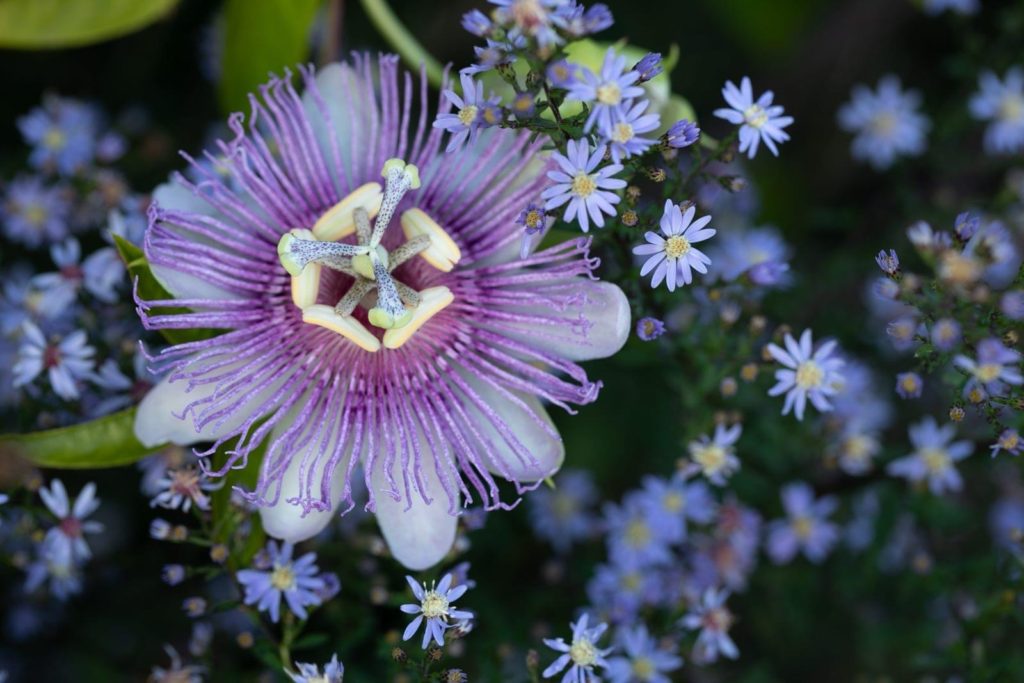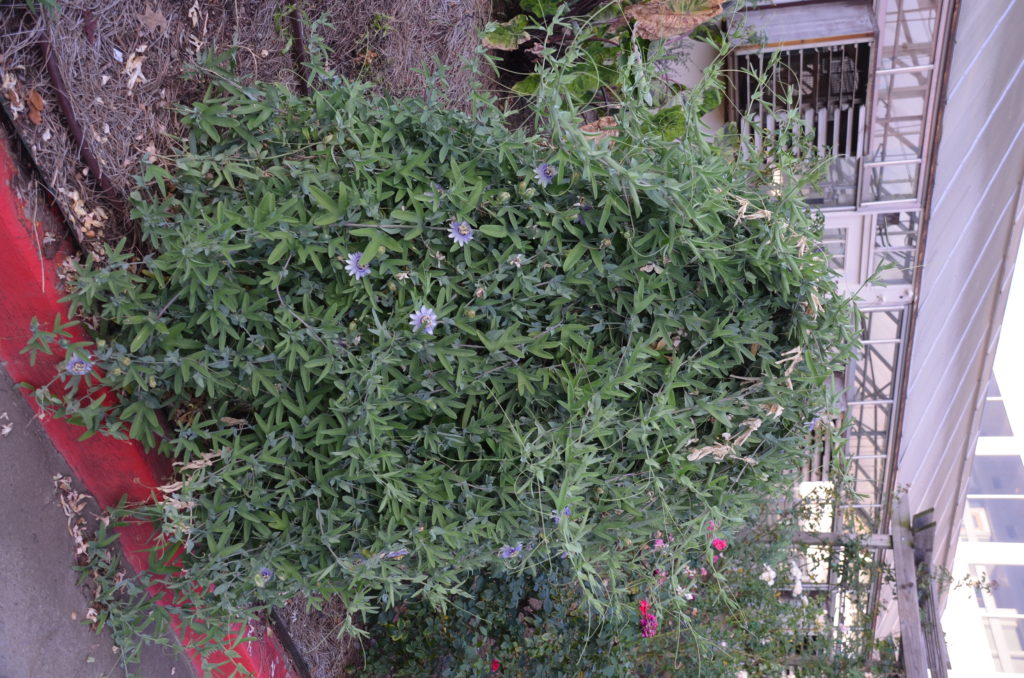Passionflower (Passiflora incarnata) is a fast-growing, trailing vine that climbs via axillary tendrils. It is woody where winter climes are warm. In zone 5, the foliage dies back to the ground in cold winters. This summer-flowering vine is native to the southeastern U.S. where you see it growing habitat in sandy soils along stream banks, roadsides, woodland edges, meadows, and pastures. It thrives in moist loamy soil in partial to full sun.

Maypop is a common name for this vine, relating to the loud popping sound made when the ripened tan colored fruits are stepped on. Under optimum growing conditions the vine spreads from root suckers and may cover large ground areas. The vine does not have to climb in order to produce flowers. If a bushy growth habit is desired, pinch the vines monthly.

The uniquely pretty flowers and edible fruits should attract curious children to an arbor, pergola, trellis, fence, or wall where the vines can be enjoyed.
Vines are moderately resistant to damage from deer.
Passionflower vine features three-lobed, dark green leaves and showy, 2.5″ diameter, fringed flowers having white petals and sepals and a central crown of pinkish-purple filaments. In fall, ripened maypops can be eaten off the vine or made into jelly.
No serious insect or disease problems trouble this native vine. Bumblebees, selected butterflies and moths, and hummingbirds are attracted to blooms.
Established vines are drought tolerant, but an organic mulch keeps roots cool and moist. Roots can spread aggressively and in poorly drained soils root rot can occur, especially in the winter. Heavy fertilizing leads to vigorous growth. Prune back vines back in late winter before leaf out.
Fire Risk: This plant has an extreme flammability rating and should not be planted on a trellis or pergola close to your home.

 Posted in
Posted in 
